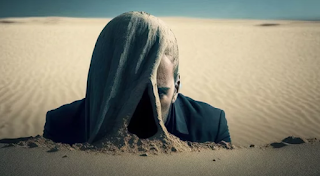There is a connection between substance abuse and social problems. The idea is that social cognition, particularly Theory of Mind - understanding others’ thoughts and intentions - is impaired by drug use. Studies show some drug users have trouble with Theory of Mind tasks, but the results aren’t entirely consistent. There’s evidence that brain regions involved in the Theory of Mind are affected by drugs, and other related mental functions are also weakened. Interestingly, the ability of the theory of mind might influence how well someone responds to treatment. Because the research on this topic has conflicting findings, the authors decided to thoroughly review studies on the Theory of Mind and substance use.
Methods
The authors conducted a systemic review following a specific guideline to assess the connection between drug use and Theory of Mind, and here is how they did it:
- Search Strategy: They looked for articles that used terms related to drug use and the Theory of Mind.
- Inclusion Criteria: Only studies published in English with original data were considered. The study had to involve:
- A group of adults who regularly use drugs
- A comparison group of adults with no regular drug use.
A specific ToM task measuring participants’ ability to understand mental states - e.g., beliefs, intentions - Excludes tasks on basic emotions, irony, or metaphors.
Analysis Considerations: The authors considered factors that might influence the results:
- Type of drug being studied.
- How the drug was being used
- How many days had passed since the last drug use?
- The details of the type of ToM task used are provided in a separate table.
Results
The researchers reviewed 14 studies that met their criteria. These studies generally had small groups - around 25 - 30 people- and more men than women. Most studies were controlled for age but not necessarily sex. Some allowed tobacco or cannabis use in the control group.
The most common test used to measure the Theory of Mind was the “Reading the Mind in the Eyes Test.” Overall, healthy people performed better on ToM tasks than drug users.
Here is a breakdown of the findings for specific drugs:
- Alcohol: People with alcohol dependence showed ToM impairments regardless of how long it had been since their last drink.
- Methamphetamine: Long-term abstainers with methamphetamine dependence showed ToM impairments, while short-term abstainers or recreational users did not. Abusive use in between did show impairments.
- Cannabis and Cocaine: Recreational users of these drugs did not show ToM impairments, but interestingly, recreational users did show problems with recognizing emotions in faces.
- Cocaine Dependence: Only one study looked at this, and the results were unclear.
The study also found that better ToM performance was linked to better social outcomes and mental health for drug users. For example, people with better ToM had fewer depressive symptoms and better memory.
Discussion
The researcher’s review examines the connection between substance use and the Theory of Mind. Limited evidence for ToM impairments: While some studies suggest ToM issues in people with alcohol or methamphetamine dependence, the overall data is restricted and needs further investigation. Recreational drug use generally did not show ToM problems.
References
Sanvicente-Vieira, B., Romani-Sponchiado, A., Kluwe-Schiavon, B., Brietzke, E., Araujo, R. B., & Grassi-Oliveira, R. (2017). Theory of Mind in Substance Users: A Systematic Minireview. Substance use & misuse, 52(1), 127–133. https://doi.org/10.1080/10826084.2016.1212890























